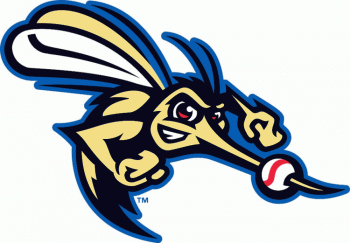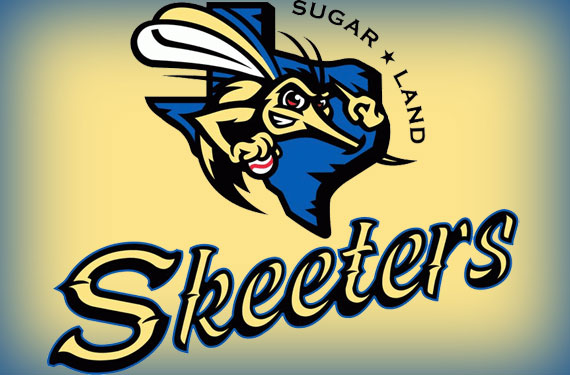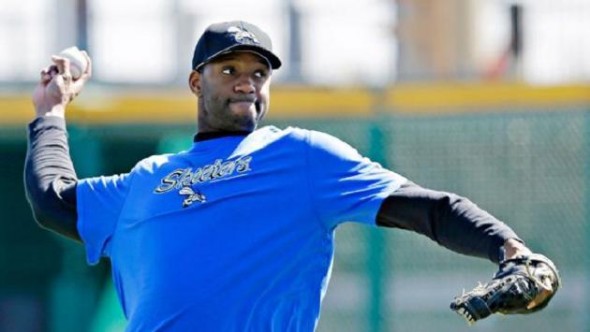There are two things residents of Sugar Land, Texas, associate with their town. The first is the Imperial Sugar Company, headquartered there since moving from Louisiana in 1907. The second is mosquitoes, which are probably going to be a problem when you build a town on swampy marshland.

 First, the sweet stuff. While the Imperial Sugar Company’s original refinery in Sugar Land is closed, the company keeps its headquarters there. In fact, the Imperial Sugar Company is such an important part of Sugar Land, that the city’s official seal includes a crown from the company’s logo.
First, the sweet stuff. While the Imperial Sugar Company’s original refinery in Sugar Land is closed, the company keeps its headquarters there. In fact, the Imperial Sugar Company is such an important part of Sugar Land, that the city’s official seal includes a crown from the company’s logo.
So when a new Atlantic League of Professional Baseball team moved to town, it’s no surprise that a name-the-team contest turn up some sweet ideas from fans—but the vote eventually produced a name with a little more bite.
“There were a lot of sugar-related names,” said JT Onyett, the team’s assistant general manager. “But they did a vote and it came down to the Skeeters.”
At first blush, this might be something of a surprise, since mosquitoes—which tested positive for West Nile Virus in Sugar Land last year, and which the city routinely attempts to exterminate using a battalion of trucks roaming the city pumping bug spray into the air—are not exactly beloved in the area.
“Mosquitoes, obviously, are not the best part of living here,” Onyett said. “If you’ve been down here, you know that there are a lot of mosquitoes with the weather and the climate that we have. Mosquitoes are rampant around here.”
That said, with a little bit of work and the right marketing, mosquitoes make for a fun identity for an independent baseball team’s nickname and logo. (One of the team’s major sponsors is for a pest control company, which makes light of the fact that it’s not trying to exterminate the team itself.)
“Everyone’s got a dog or other normal mascot type thing, so having this pest, it kind of takes it to a different element,” Onyett said. “I wouldn’t say there’s a huge benefit to being a bug or a pest, but we definitely have fun with the fact that we are.”
 But the team didn’t just adopt the name Mosquitoes. They went with Skeeters, a common (but not universal) nickname for the pests. Onyett, who moved from southern California to work for the team, was not exactly sure what he was getting into.
But the team didn’t just adopt the name Mosquitoes. They went with Skeeters, a common (but not universal) nickname for the pests. Onyett, who moved from southern California to work for the team, was not exactly sure what he was getting into.
“When I started looking at coming out here, I was kind of like, ‘A Skeeter?’” said Onyett. “I had never heard of that. My family back in California, when I first took the job, was kind of like, ‘What’s a Skeeter?’ Around here, everyone knows.”
The logo attempts to walk that fine line between appealing to both kids and adults, all while trying to make a biting, disease-carrying nuisance a loveable mascot.
“I think our mosquito-looking guy, he looks tenacious enough but still fun,” Onyett said. “It’s not like there’s a clown on the logo or something like that that an adult would not wear out in public.”
 While the team went with a mosquito-based logo, they didn’t ignore sugar altogether in their identity. The logo set, designed by Brandiose, evokes sugar cane in its lettering. And lest you forget where Texas’s biggest sugar company is located, the primary mark features a cartoon mosquito skewering an outline of Texas like a push pin marking a map. And the colors, officially called rawhide yellow, imperial blue, and refinery red, have a kind-of sugary taste them.
While the team went with a mosquito-based logo, they didn’t ignore sugar altogether in their identity. The logo set, designed by Brandiose, evokes sugar cane in its lettering. And lest you forget where Texas’s biggest sugar company is located, the primary mark features a cartoon mosquito skewering an outline of Texas like a push pin marking a map. And the colors, officially called rawhide yellow, imperial blue, and refinery red, have a kind-of sugary taste them.
Before the mosquitoes moved to town in 2012, the region had not had minor league baseball since the Houston Buffaloes (the first-ever minor league team to be affiliated with a Major League club) left town more than a half-century earlier in 1961. It was important that the Skeeters get it right to get the fans on their side.
“I think a big thing that this team had to do when they came here was get the community buy-in,” Onyett said.
They appear to have done something right, because not only do the Skeeters, the first Atlantic League club located anywhere but the Northeast, have solid fan support, they’ve also caught the attention of some notable names in the sport.
While the Skeeters’ roster has seen the likes of Major Leaguers like Jason Lane and Scott Kazmir, the first name that pops to mind for most baseball fans is one with a little more history behind it.
Roger Clemens famously pitched two games with the team in 2012, in part because his son was a catcher with the Skeeters, but also, some speculated, because he might be trying to catch the attention of the nearby Houston Astros.
In 2014, another Skeeters pitcher of note was Tracy McGrady, the NBA star who tried to turn to baseball after his basketball career ended. McGrady pitched half a season with the team before hanging up his cleats.
The Sugar Land Skeeters could have gone with a sugar-based identity and it likely would have been unremarkable. Instead, the Skeeters have taken a bug that most people actively try to kill with their bare hands and attempted to turn it into a fun identity. It’s the sort of thing that can backfire if done poorly, but done right, it’s one of the more notable identities in independent minor league baseball.












